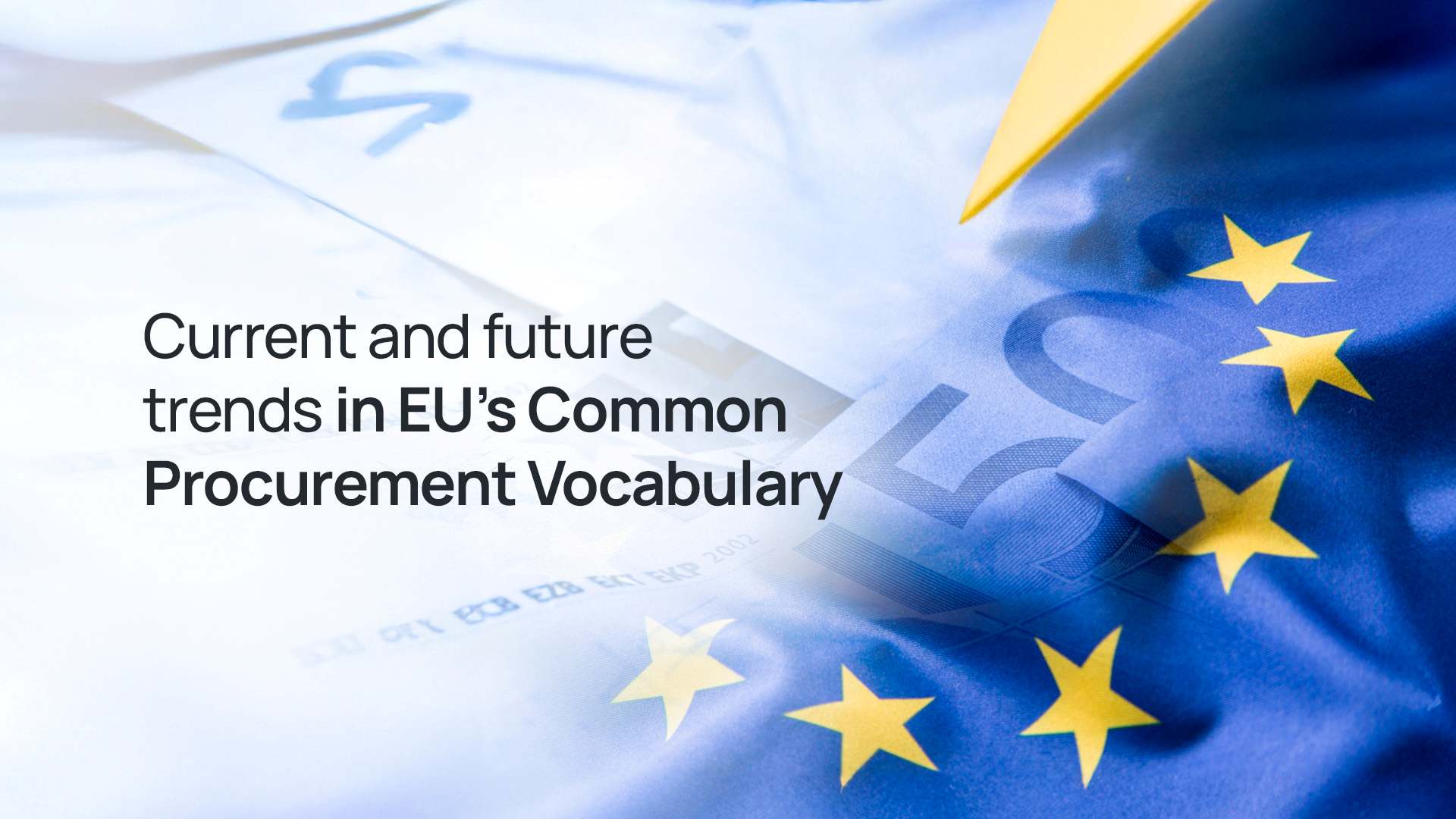In a recent article, we explored the fundamentals of the European Union’s standard language for government contracts - the Common Procurement Vocabulary (CPV), its structure, and its logic.
In this article, we take a closer look at the developments that are bound to transform this classification system to address its growing needs as the procurement sector evolves. We’ll expand on the key trends and consider digital integration, changing usage patterns, and strategic applications in CPV.
Digital transformation in CPV
Digital transformation has had a massive impact on the way companies now use CPV since it originally made its mark in streamlining and simplifying procurement in a meaningful way. Automation, artificial intelligence (AI), and machine learning (ML) are but a few examples of the tech that the system incorporates today.
Digitization changes the way we use, assign, and manage codes so that we become less reliant on manual input and less prone to human error.
Automation in CPV code assignment
While AI solutions such as ChatGPT had become available to the wider public by the end of 2022, the procurement industry saw the successful integration of AI and machine learning as early as the 1980s when rule-based algorithms and expert systems were more rudimentary versions of this technology.
In the previous article, we mentioned that CPV can sometimes appear to be too complex even for experienced users and often too granular for both service providers and contracting authorities. ML algorithms now allow users to mitigate this issue by using the system’s predictive capabilities.
Some models are already capable of identifying the first two digits of a CPV code with 95% confidence, the first 3 digits with 84% confidence, and the first four with 70% confidence. This capability alone will considerably reduce the frequency of products and services being misclassified which is one of the more common issues in the process.
Misclassification can happen for a variety of reasons, ranging from simple typos to misunderstanding the rules of code formation or simply because the procurement officer chose not to take the time to find the correct code. As a result of misclassification, businesses find it more difficult to remain competitive.
E-procurement systems
E-procurement platforms are also an integral part of digital transformation. They provide a wide range of tools that enable procurement workflows to be seamless and tendering processes to be much more efficient. This is a central part of what Tenderwell does – one of this platform’s central goals is to simplify tendering for businesses by providing advanced search capabilities, automated alerts, and real-time updates.
It is also essential to stress that procurement platforms do not cater exclusively to service providers because contracting authorities can also benefit from the ML and AI-based tools that allow them to analyze past procurement data and supplier information. Consequently, they are able to extract valuable predictive insights and make more informed decisions regarding suppliers, products, and so forth.
Strategic use of CPV data
AI's data analytics capabilities now make it easy to process procurement data from recent years to analyze supplier performance and market dynamics. This equips businesses with better foresight that allows them to strategize and adapt to the market.
Another important use of CPV data is in spending analysis.Due to CPV’s inherent complexity, procurement officials can track spending with great precision, extracting financial data on expenditure by category, product, or service. This granular approach to data allows authorities to optimize their budgets to ensure they allocate their funds efficiently and can even identify potential areas for cost savings or reallocation.
The way CPV organizes and classifies data (the system’s taxonomic granularity) also allows authorities to monitor trends in diversity and inclusion within procurement when CPV is used in combination with other data sources.
CPV codes can be used to track tenders awarded to minority-owned businesses or underrepresented groups. Access to this data makes it possible to promote an equitable distribution of contracts, which can help to address historical disparities across different geographies within the EU and foster economic development in underserved communities.
Obviously, as a classification system, CPV alone cannot achieve this, but according to a study published by OECD, this can be accomplished in tandem with targeted policies and initiatives.
Harmonization with other systems
Interoperability has been a very important issue in CPV for a very long time. Basically, enabling it to harmonize more effectively with other public procurement systems such as UNSPSC, eCl@ss, and GPC will lead to a considerable reduction in the inefficiencies caused by the various classification structures, which will allow businesses of all sizes to participate in tenders all over the world, regardless of the classification framework used.
Avoiding having to deal with the current patchwork of classification systems will be extremely beneficial for SMEs that do not always have the resources to deal with multiple regulatory frameworks and administrative burdens.
Conclusion
Common Procurement Vocabulary is currently going through various changes that are mostly being driven by digital transformation and AI. These trends and developments are bound to make procurement more streamlined and equitable for everyone involved.
This means that companies of all sizes will be able to take advantage of these innovations by using e-procurement systems and benefiting from the wealth of data they can offer – market and spending analysis, trend monitoring, and automated bidding capability
